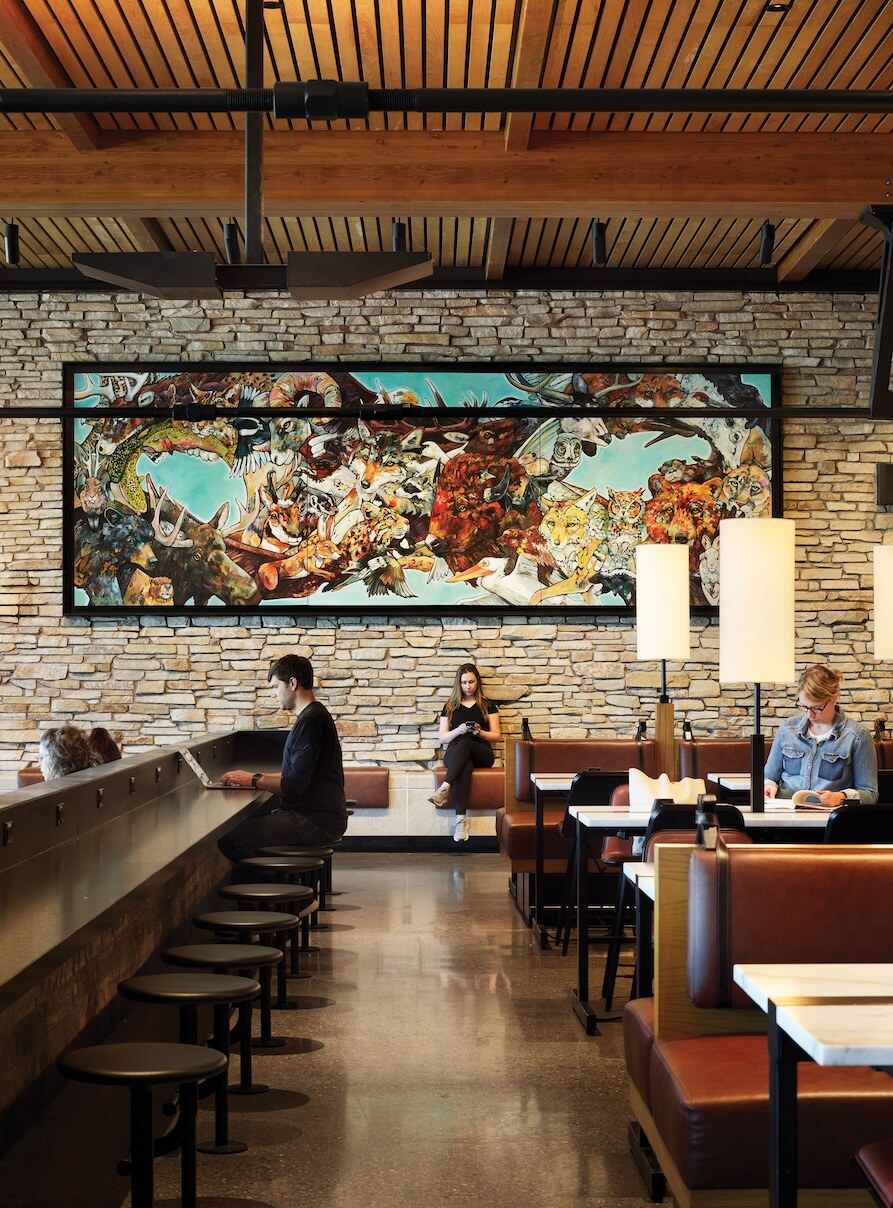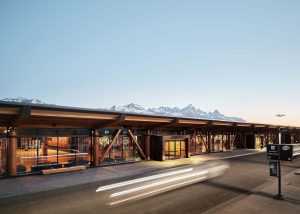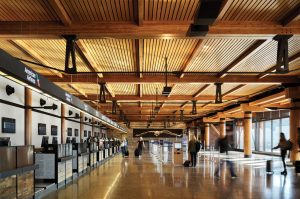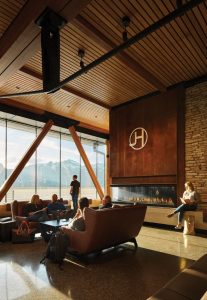
10 Apr Design Elements: Landmark: Jackson Hole Airport’s newest update by CLB Architects honors its national park setting
Travelers flying into Jackson Hole Airport are welcomed by stunning views of the Tetons. The airport is within Grand Teton National Park and is the only U.S. commercial airport situated within a national park.
A series of renovations to the airport began in 2008, with Gensler as architect of record and CLB as the local associate architect. Following the initial renovation, CLB served as the architect of record with Miller Dunwiddie as executive architect, completing extensive work on the airport over the past decade while prioritizing keeping those gorgeous peaks and that stunning natural environment in sight.

Jackson Hole Airport is the only commercial airport located within a U.S. national park, and CLB Architects worked to showcase the natural beauty of its surroundings.
In June 2023, CLB unveiled the latest phase of the project, which included adding a new restaurant and bar area — with sit-down, casual bar, and grab-and-go options — the addition of two new gates, an expansion of the holding area where passengers wait for flights, a gift shop, and an update to the baggage claim area with a snack bar and retail space. “It’s a complete transformation of what it means to fly in and out of Jackson Hole,” says Kevin Burke, partner at CLB. The project also includes several thousand square feet of underground space that will be available for various purposes in the future.

CLB has worked on projects at Jackson Hole Airport for more than 15 years.
Materials, including Douglas fir glulam beams and rough-hewn log columns, embrace the local environment. The aesthetic also includes natural stone, dark metals, and leather for added warmth throughout open, spacious, and welcoming areas.
In the airport holding zone, walls of windows provide incredible Teton views, opportunities to watch planes arrive and depart, and an abundance of places to cozy up by a fireplace or in a comfy seat while waiting.

Douglas fir glulam beams, roughhewn log columns, natural stone, dark metals, and leather are used throughout the airport, mirroring elements of the local environment.
“The arriving visitor is really treated to those views when they land because we don’t have [jet bridges] — they have to actually walk out of the plane and down onto the tarmac and work their way to the building,” says Burke. “They’re first greeted by these amazing views when they’re getting off of the plane, so the building tries to re-create that as it relates to the visitors that are departing.”
Burke says sight lines are important when people are waiting by their gates to fly out. “You see it with a lot of the new airport terminals around the world having those great sight lines toward where you’re going or where you’ve come from, acknowledging where you are. Having that connection is always really nice.”

The airport offers plenty of places where travelers can cozy up in a comfortable seat by a fireplace while awaiting their flight.
Though the expansion project required navigating some challenges, including strict building guidelines in the national park, it’s all a part of recognizing the special place where the airport is located. “The beauty of the place is all about the Teton Range and the park setting, and you don’t want to create architecture that competes with that,” Burke says. “You really want a building that acknowledges all this natural beauty that surrounds you.”




No Comments